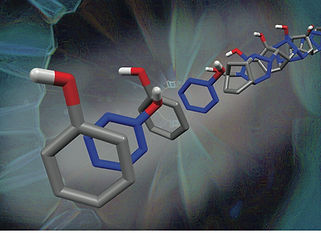
In collaboration with the Badding and Crespi groups, as well as the Hoffmann group (Cornell), Trauner group (NYU), and Schmidt-Rohr group (Brandeis) as part of an NSF Center for Chemical Innovation, we are working to utilize supramolecular chemistry and organic synthesis to engineer functionalized flexible carbon-based nanothreads that are structurally similar to poly(adamantane)s. Crystalline carbon nanothreads can be synthesized though polymerization of small unsaturated molecules. Recent work has unlocked the potential of pyridine-derived nanothreads, and functionalization of those polymers is envisioned to be straightforward and is ongoing.
We seek to understand the mechanism governing the formation of 1D rigid carbon materials from aromatic precursors. Multiple carbon-derived nanomaterials (e.g., graphene, graphene, nanotubes, nanohoops) are well-interrogated, yet methods to engineer 1D sp3-hybridized carbon materials remain unprecedented, despite theorized high tensile strength and chemical versatility. Our interest lies in generating new materials from abundant feedstocks through pressure-induced-polymerization into crystalline products, inspired by the discovery that molecular benzene, pyridine, and thiophene all polymerize under high pressure (i.e., ~24-28 GPa) into nanothreads.

a) Degree 6 polytwistane nanothread; b) Degree 4 (partially unsaturated) carbon nanothread with double bonds (red) properly oriented for 1D conduction; c) Degree 6 carbon nitride tube(3,0) nanothread with nitrogen in its backbone (cyan).


Thus, are presently rich opportunities for the synthesis of a diversity of materials incorporating heteroatoms into their backbones and with different external functional groups. We have recently synthesized furan-derived nanothreads that interrogate the role of aromaticity in reaction pressure and mechanism. By adapting these insights to other abundant precursors, we can access robust sp3-derived carbon materials through the upcycling of abundant biomass or petroleum-derived small molecules. In a second strategy, supramolecular interactions preorganize reactants for pressure-induced solid-state polymerizations, wherein noncovalent interactions aid in precise C—C bond formation.